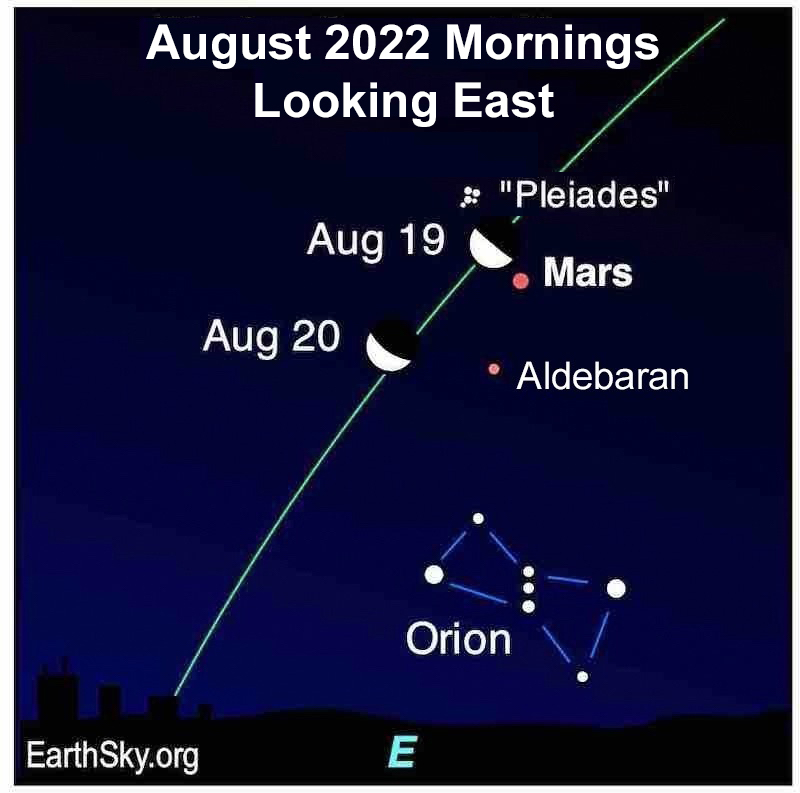
Mars and the moon
You can find Mars and the moon near each other in the late night or early morning sky on August 19 and 20, 2022. The moon, now in a waning crescent phase, moves past bright, reddish Mars after midnight. For those in the Northern Hemisphere, you’ll see the half-lit moon slip above Mars as dawn approaches on the 19th. By the 20th, the moon has ventured further into Taurus. On that date, reddish Aldebaran in the Hyades Cluster forms a triangle with Mars and the moon.
While you’re viewing Taurus, take the time to enjoy both of its famous clusters, the Hyades and the Pleiades. Through binoculars, the Pleiades changes from a little dipper-like cluster of a handful of stars to a crowded field of 50 or more stars. The Hyades is too large to see in the field of view of binoculars. It’s the closest star cluster to Earth. But you can take a closer look at Aldebaran, the bull’s fiery eye.
Every evening Mars will rise a bit earlier, entering the evening hours in September. By late September, Mars will rise around 10 pm local time. The red planet will continue to brighten and grow in size while racing toward opposition on December 8, 2022.
The 3rd quarter moon occurs at 04:36 UTC on August 19.
The view from the Southern Hemisphere
If you live in the Southern Hemisphere, you’ll have to wait until well past midnight before Mars rises. On the morning of the 19th, the moon and Mars are still somewhat far apart, with Mars lined up even with the Pleiades. By the 20th, Mars, the moon and the Pleiades form a tight triangle. However, on the morning of the 19th from south of the equator, you can spot Uranus by the moon. Check Stellarium.org to see star charts for the view from your location.
Bottom line: Mars and the moon are close together in the sky on August 19 and 20, 2022. The moon reaches 3rd quarter phase at 04:36 UTC on August 19.
For more great observing events in the coming weeks, visit EarthSky’s night sky guide
The post Mars and the moon, August 19 and 20 mornings first appeared on EarthSky.
0 Commentaires